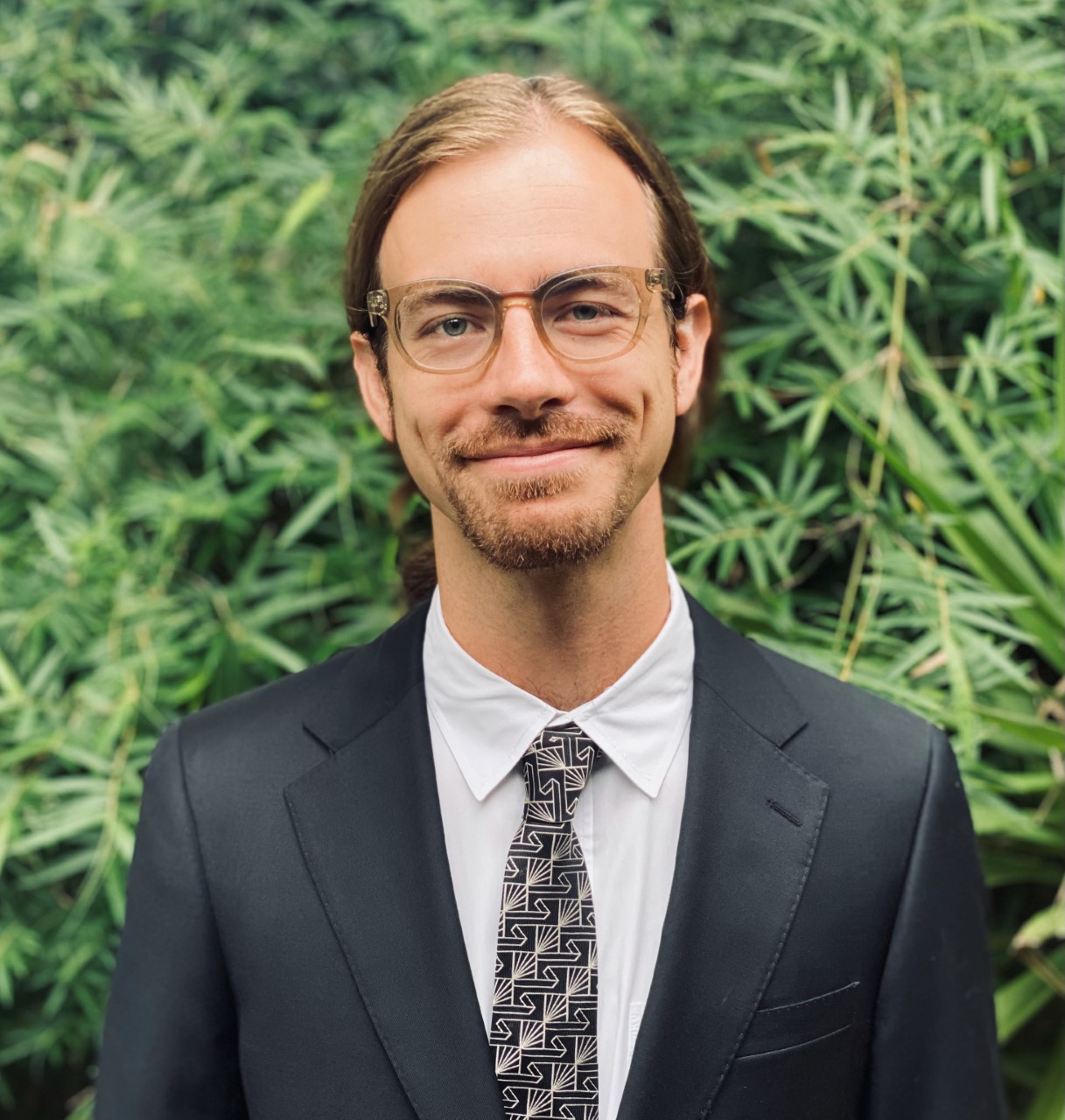FSU History Alumnus Spotlight: John Cable (PhD 2020)

The path to becoming a college professor is not always straightforward. Oftentimes, taking teaching jobs at different levels can help to expand your experience and abilities as an instructor and mentor. Teaching at the high school level versus at the college level require different pedagogical approaches, each with their own challenges and rewards. John Cable joins us to discuss his previous position as a social studies teacher at Lee County High School, as well as his current position as an assistant professor of history at Abraham Baldwin Agricultural College (ABAC).
John earned his BA and first MA from Georgia College and State University, and then went on to pursue a second MA and a PhD from Florida State University. Working under the guidance of Dr. Maxine Jones, John’s research centered around the American South and Mississippi in the mid-twentieth century, which he analyzed through the lens of settler colonialism and transnationalism.
John defended his dissertation right before the COVID-19 pandemic happened, and this complicated his job search. John was able to draw on his experience from his first MA in teaching, he is certified to teach K through 12, as well as working as a substitute teacher. The first position John held after graduation was at a high school in Leesburg, Georgia. While there, John taught five sections of U.S. history, with each class containing around 30 students. John explains: “My job consisted not only of teaching a standards-based curriculum in a way that aligned with my administration's pedagogical expectations,” but also “closely monitoring students' overall academic performance and dealing with behavioral issues.”
Teaching at the high school level held many challenges, among them the long work hours. “I honestly never felt I had finished,” John explains when detailing his day-to-day experiences. In addition to teaching, John had to call parents to keep them appraised of their child’s academic performance, and document those calls. John was fortunate to have the support of his school’s administration during his time there. He commends those who teach at the K-12 level, “People who teach K-12 for 30 plus years deserve a medal. … [it’s] really honorable work.”
In the summer of 2021, after a year of high school teaching, a position at ABAC became available. John’s own research was close to what the university was looking for. “I applied and did some online interviews, in-person interviews, and gave a job talk.” John impressed the search committee so much that he was offered the job.
The conundrum was that he received the offer in late July, only a week before pre-planning started at Lee County High School. John didn’t want to leave the high school without a social studies teacher but also didn’t want to miss out on working as an assistant professor. In the end, he was able to start his new position for the 2022 spring semester, giving the high school time to find a replacement.
At the college level, John discovered “things are certainly different.” For one, the teaching schedule is lighter, with John teaching a 4-4 load. There are also no parents to call, and while students are encouraged to come to office hours, the ultimate decision is up to them.
John explains that for him the biggest change from teaching high school was the freedom he had in designing his courses. He created his own course syllabi putting emphasis on content he thought important for the students to know - and at a pace he felt comfortable teaching. Even with a 4-4 load, he had enough time to prepare his lectures, grade the assignments, and spend time with his family. John lives over an hour from the college, so having more flexibility in managing his schedule is vital for his own well-being.
John explained that one of the most helpful experiences he had at FSU was having the faculty model “how to be a great teacher…and mentor.” John appreciated the way that graduate students are introduced to working in the classroom in phases, first, “by allowing you to be a grader first for a couple of years,” and secondly, teaching your own courses. Letting the students grade for multiple classes exposes them to different styles of instruction and see what they might want to emulate in their own classroom.
John appreciated how “once you’re in the classroom, the faculty are always keeping their doors open and answering questions about how to…structure a syllabus, break down grades, [or] handle crises that happen.” He leaned a lot on his committee members, Drs Jones, Frank, Mooney, and Hanley. “They were very generous with their time, …so I try to model that for my current students.” John takes time to sit with his students, to make sure they are heard, and giving them as much of his time and resources as he can, “because we’re preparing another cohort” of history majors for the job market.
Interacting with people, both faculty and students, is one of John’s favorite parts of his job. “Everybody is working hard but everybody is helping one another, too,” John explains. “It’s a small place, so you get to know a lot of people pretty well.”
For those looking to pursue teaching careers in higher education, John advises to “accept as many different teaching opportunities as you can.” One of the biggest reasons John believes for him getting the assistant professor position was that he had experience not just at the high school level, but also as a substitute teacher in elementary and middle schools. “I think especially small colleges are wanting instructors who have some of that K-12 experience,” he explains, “so if you can’t immediately find a tenure track position, don’t fret, … go teach.” This is something that could work in your favor and boost your credentials. Although you might not end up with your dream job right away, it is important to get more experiences which will help you move towards your ultimate goal.

